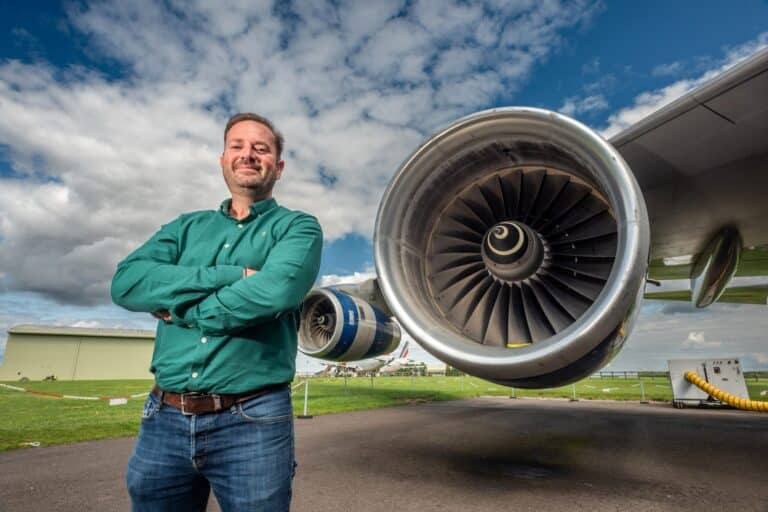Firefly Green Fuels is looking to cut aviation’s carbon footprint and transform the way the world’s airlines are powered through an innovative method: Sewage.
Taking sewage sludge from water utilities, Firefly puts it into a high pressure reactor to separate it into two useful materials: Biochar, a fertiliser for the agriculture industry, and bio-crude, which can be refined into jet fuel.
“Firefly’s route to sustainable aviation fuel (SAF) is unique in that it uses a completely biogenic and otherwise problematic material as a feedstock – sewage,” James Hygate, Firefly Green Fuels CEO, said. “This cheap and abundant feedstock will never run out and the SAF we can produce with it is almost identical to fossil jet fuel.”
“Sewage is interesting to work with. At the moment the only other disposal route in the UK is through agricultural spreading, a practice which will likely be outlawed as soon as a better route is secured,” he added. “Our process gives this waste a new purpose, creating SAF whilst supporting biodiversity in ecosystems currently plagued by agricultural runoff.“
READ: Using sewage to clean up aviation
Multiple approaches
Currently, the approved SAF routes cannot cover the necessary demand in the aviation industry, requiring more solutions to be developed.
“We really do need every different route to SAF to work out if we want to meet ambitious global targets,” Hygate said. “That means that more support is needed from governments and other technologies need to also be developed alongside SAF. We really don’t have much time to make these changes if we want to make a significant impact on climate change.”
“I think that every route to SAF is incredibly innovative and will be an important part of the puzzle moving forward, but our SAF made from sewage is an incredibly effective and green solution that promises to be very cost-effective too,” Hygate continued. “When looking exclusively at biogenic wastes, the Firefly route shows potential to be the largest single source of SAF globally.”
Power of partnerships
Wizz Air has been a supportive partner of Firely, signing a significant offtake agreement with them earlier this year.
“We’re hopeful that other airlines will see the potential in our solution and also reach out for partnership in the near future,” Hygate explained. “Additionally, we have worked very closely with key figures across the aviation and water industries to date, who have all been extremely supportive for our solution which they recognise to be a real game-changer.“
Recently Firefly has been in conversations with officials in a major metropolitan area who believe that, through the sewage-to-SAF process, they could power up to 80% of flights from their international airport using SAF alone.
“People around the world are waking up to the fact that SAF is about to become a huge market disruptor in the fuel industry and we’re starting to see airlines and governments more vigorously back SAF producers,” Hygate said.
“SAF really is the future of air travel, it’s not just a pie in the sky idea and its production will only continue to gather pace,” he declared.
READ: Wizz Air invests £5M in sustainable aviation fuel producer
Path forward
Firefly is working at pace towards the realisation of a first-of-a-kind plant in the UK within this decade. However, that’s just the start. As the feedstock is globally relevant, they plan to roll this technology out around the world.
“With the quantity of sewage produced globally there is the potential to provide a significant proportion of the global SAF demand in the coming decades,” Hygate explained.





